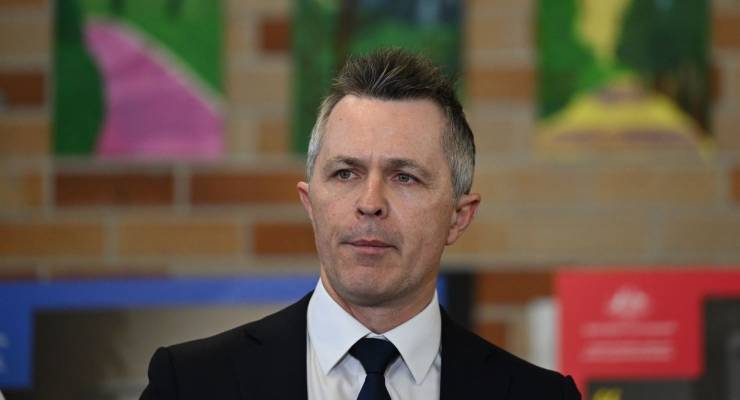
What was claimed
A new federal and state bilateral agreement will result in Western Australian public schools receiving 100% funding under the school resource standard (SRS) calculation.
Our verdict
Unproven. The federal government has not said if it will remove a “loophole” that potentially reduces funding to 96% of the SRS total.
Federal Labor MPs are heralding a new agreement with WA’s government that they say will result in schools being fully funded for the first time.
The fully funded claim refers to the school resource standard, a calculation based on the landmark 2011 review of school funding, commonly known as the Gonski Review.
The claim is unproven. Labor is yet to confirm if it will remove a provision that allows states to include non-SRS spending as part of its SRS commitment. At present, this can be up to 4% of the total SRS figure — potentially leaving schools only 96% funded.
Several Labor figures have made the claim following federal Education Minister Jason Clare announcing the agreement alongside WA counterpart Tony Buti at a press conference in Perth on January 31.
In an ABC TV interview, Clare stated the agreement would get WA public schools “to that full funding level that David Gonski talked about all those years ago”.
Federal Labor MP for Perth Patrick Gorman repeated the claim in a post on X (formerly Twitter).
“I am proud that WA is the first state to sign with the federal government to provide 100% of the schooling resource standard,” he wrote.
The “agreement” is currently a “statement of intent” with both parties saying the finer details are yet to be decided.
AAP FactCheck asked Clare if the 4% provision would be removed. His office did not directly answer and instead pointed to a response Buti gave to a reporter’s question at the January 31 press conference.
“I suppose you’re talking about this 4%,” Buti said. “That has been always considered as part of the funding agreement. Every other state does it. That 4% goes to ensuring that we have a quality education.”
The SRS is an estimate of how much public funding a school needs to meet its students’ educational needs.
Each school’s total is made up of a base amount per pupil and then the possible addition of several needs-based loadings, taking into account factors like English language proficiency, socio-educational disadvantage and location.
Under the current agreement, the federal government funding for public schools is capped at 20% of the SRS, with states contributing up to 75%, leaving a shortfall of 5%. Under the new model, WA’s contribution would rise to 77.5% and the federal contribution would rise to 22.5% by the end of 2026.
However, under the existing agreement, states can include in their contribution non-SRS costs such as capital depreciation and regulatory fees. This can amount to up to 4% of the total SRS funding.
Experts told AAP FactCheck this means funding only reaches 96% of the SRS level if states take advantage of the full 4% provision.
Nine Newspapers reported last month that the provision meant $2 billion supposedly spent by states and territories in 2023 never reached the classroom.
Matthew Sinclair, an educational policy researcher at Curtin University, said the details were still being negotiated ahead of the agreement coming into force next year.
He added: “In summary, unless this clause is removed in the next set of bilateral funding agreements, then the claim that in practice schools can be funded at 96% of the SRS, assuming the states and territories utilise this loophole, rather than 100%, will prove to be correct.”
Stephen Lamb, an emeritus professor at the Centre for International Research on Education Systems, agreed.
“If the previous rules and inclusions are retained this will mean that there is at least 4% of funding for public schools that is unavailable to be spent on public schools and learning in public schools, relative to private schools,” Professor Lamb said.
He said the 100% claim would only be true in a “technical sense” and that in reality schools would be 96% funded.
The verdict
The claim a new federal and state bilateral agreement will result in Western Australian schools receiving 100% funding under the school resource standard (SRS) calculation is unproven.
The agreement is currently a statement of intent with details still to be finalised.
A current provision allows states to claim 4% of the total SRS amount as non-SRS costs. If this remains, then it’s possible that schools may only be 96% funded.
The federal government has not confirmed if the provision will be removed.
Unproven. There is not enough evidence to determine the claim’s accuracy.








Crikey is committed to hosting lively discussions. Help us keep the conversation useful, interesting and welcoming. We aim to publish comments quickly in the interest of promoting robust conversation, but we’re a small team and we deploy filters to protect against legal risk. Occasionally your comment may be held up while we review, but we’re working as fast as we can to keep the conversation rolling.
The Crikey comment section is members-only content. Please subscribe to leave a comment.
The Crikey comment section is members-only content. Please login to leave a comment.